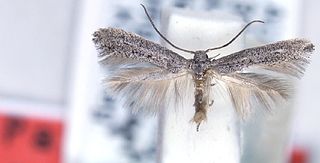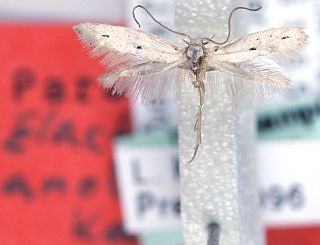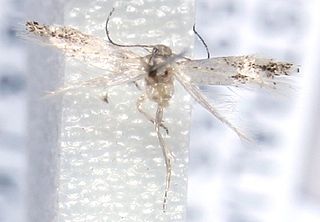Elachista evexa is a moth of the family Elachistidae. It is found in New South Wales, Australia.
Elachista leucastra is a moth of the family Elachistidae. It is found in Tasmania, Australia.
Elachista crocospila is a moth of the family Elachistidae. It is found in Australia in south-eastern New South Wales.
Elachista patersoniae is a moth of the family Elachistidae. It is found in south-eastern New South Wales, Australia.
Elachista ictera is a moth of the family Elachistidae. It was described by Lauri Kaila in 2011. It is found in Australia in the Australian Capital Territory and south-eastern New South Wales.
Elachista floccella is a moth of the family Elachistidae. It is found in Australia in the Australian Capital Territory, New South Wales and Tasmania.

Elachista crenatella is a moth of the family Elachistidae. It is found in the Australian state of South Australia near Adelaide and on Kangaroo Island.
Elachista cursa is a moth of the family Elachistidae. It is found in the Big Desert in Victoria, Australia.
Elachista eriodes is a moth of the family Elachistidae. It is found in the Australia state of New South Wales and on the Fleurieu Peninsula in South Australia.
Elachista lopadina is a moth of the family Elachistidae. It is found in south-western Western Australia.
Elachista patania is a moth of the family Elachistidae. It is found in the coastal areas of south-western Western Australia.
Elachista averta is a moth of the family Elachistidae. It is found in Australia in eastern New South Wales and Queensland.

Elachista anolba is a moth of the family Elachistidae. It is found in Australia in southern Tasmania.
Elachista crumilla is a moth of the family Elachistidae. It is found in Australia.
Elachista cyanea is a moth of the family Elachistidae. It is found in Australia along the eastern coast form southern Queensland to Burrewarra Point in New South Wales.
Elachista polliae is a moth of the family Elachistidae. It is found in Queensland, Australia.
Elachista ignicolor is a moth of the family Elachistidae. It is found in eastern Queensland and New South Wales, Australia.
Elachista platysma is a moth of the family Elachistidae. It is found in Australia.

Elachista stictifica is a moth of the family Elachistidae. It is found in Australia.

Elachista zophosema is a moth of the family Elachistidae that is found in Australia, where it has been recorded from higher altitudes in Tasmania.



